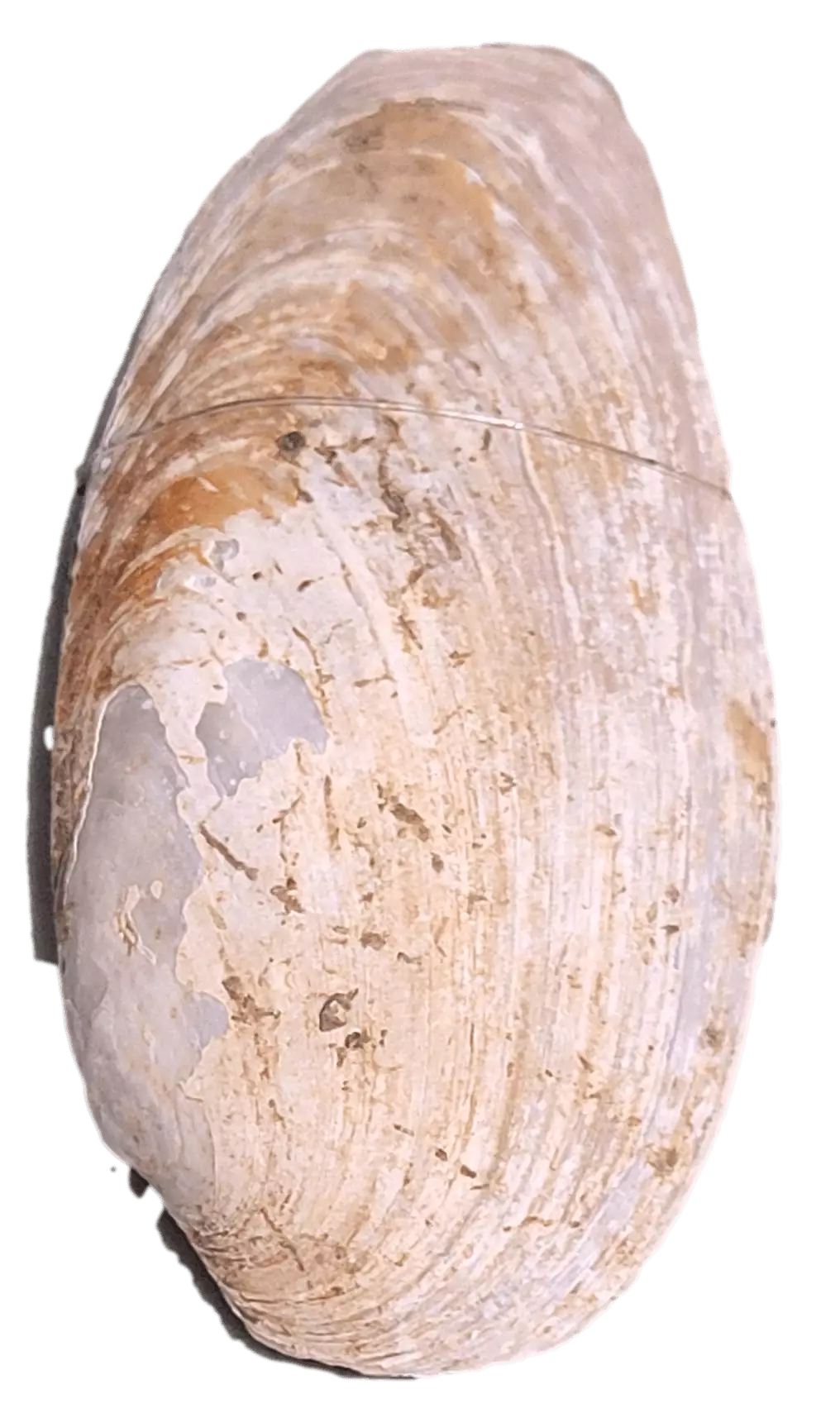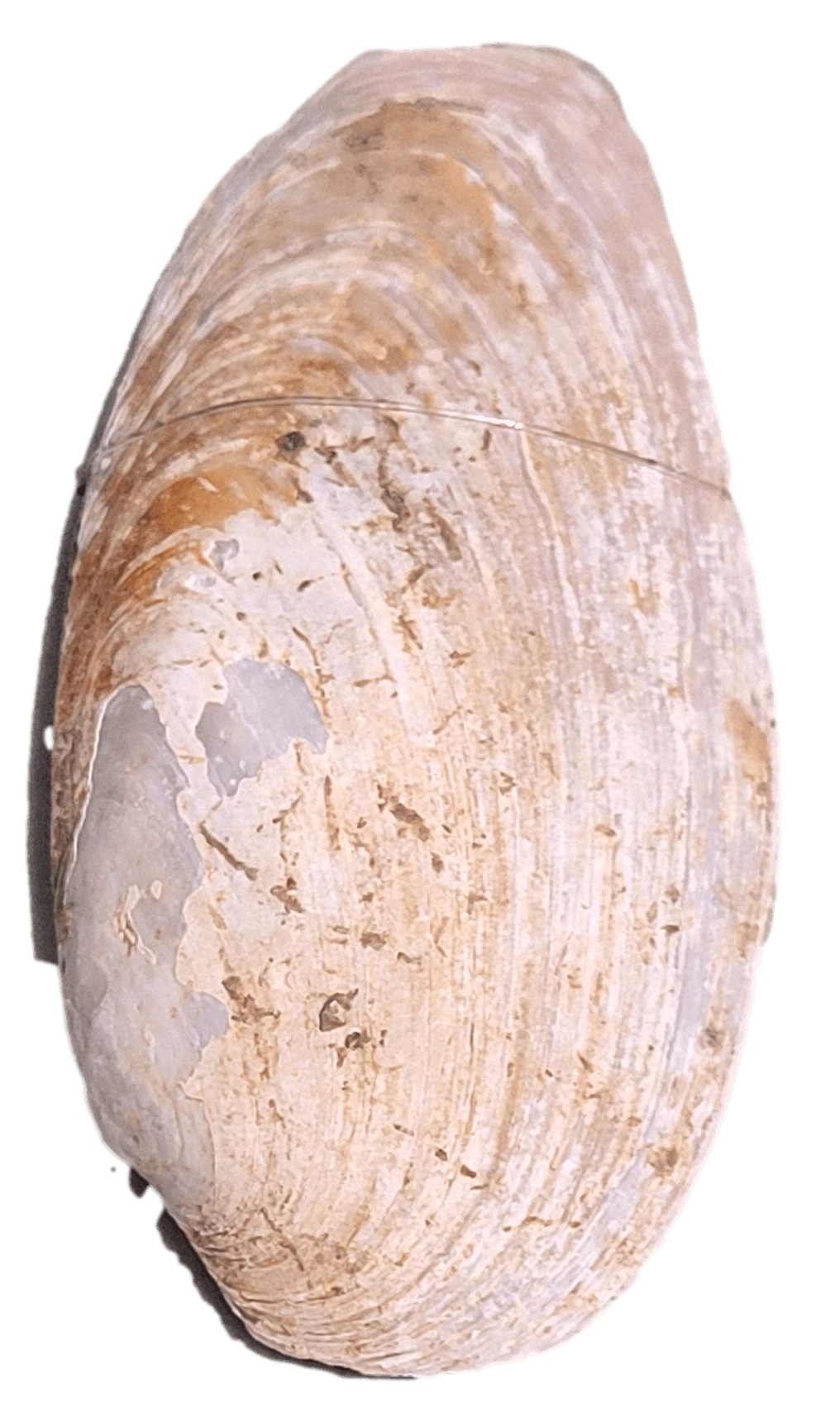Native Groups – Mississippian Artifacts and Pottery
The artifacts displayed here were excavated from the only known Mississippian village in McLean County. Located north of Heyworth in Randolph township, the Noble-Wieting site and its artifacts predate the arrival of the Kickapoo People.

This bone beamer was used to scrape both sides of a hide. The tool was used in a fashion similar to a modern steel draw-knife by holding one end in each hand and then scraping the hide in a pushing or pulling motion.

The use of pottery grew during the Woodland period, but it was in the Mississippian period that pottery making techniques improved significantly.
Mississippian people began to add crushed shell to clay around 800 CE. Shell-tempered clay was both lighter and stronger than sand or grog-tempered clay. It also transferred heat to food more efficiently during cooking.
Grit-tempered (sand added) or grog-tempered (crushed ceramic) pottery was prevalent during the Woodland period. Tempering reduced shrinkage and cracking when the pot was fired, but made Woodland pots thick and heavy.
Mississippians decorated their pottery with slip, a liquified suspension of clay particles and other materials that when fired gave the pottery color. Graphite was added to create black, hematite (a mineral form of iron oxide) for red.
 Making a Home
Making a Home
 A Community in Conflict
A Community in Conflict
 Working for a Living
Working for a Living
 Farming in the Great Corn Belt
Farming in the Great Corn Belt
 Abraham Lincoln in McLean County
Abraham Lincoln in McLean County







